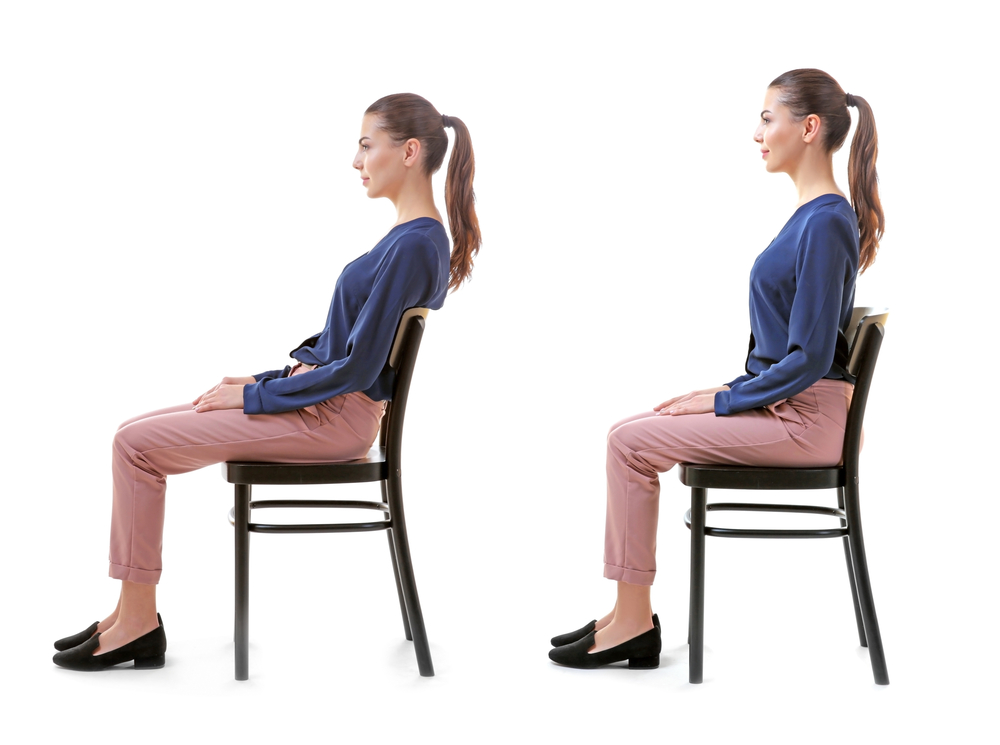Follow us and share.
Postura Corporal: Clave para una Vida sin Dolor y con Mejor Salud
Discover how body posture affects your health and physical well-being. Learn to identify and correct poor posture habits with practical strategies.

¿Has sentido dolor de espalda después de pasar horas frente al computador o de mirar tu celular? 🤳 No estás solo. La body posture influye más de lo que imaginas en tu bienestar físico, emocional y hasta en tu energía diaria.
Mantener una postura adecuada no solo mejora tu apariencia, sino que protege tus músculos, articulaciones y columna vertebral, previniendo dolores crónicos y lesiones a largo plazo.
En esta guía de Virtual Medical Guide, aprenderás qué es la postura corporal, por qué es tan importante y cómo puedes mejorarla con pequeños cambios en tu rutina.
📌 What is good posture and why is it important?
The body posture es la forma en que mantenemos la posición del cuerpo, ya sea al estar de pie, sentados o en movimiento. En términos simples, es la “alineación” entre los huesos, músculos y articulaciones que permite equilibrio y estabilidad.
Una buena postura distribuye el peso corporal de manera equilibrada, evitando tensiones musculares y reduciendo la presión sobre la columna y las articulaciones. En cambio, una postura inadecuada —como encorvar los hombros o adelantar la cabeza— puede causar:
- Dolor cervical y lumbar.
- Fatiga muscular.
- Tensión en cuello y hombros.
- Problemas respiratorios o digestivos.
- Alteraciones en la circulación sanguínea.
👉 Según la Mayo Clinic, mantener una postura correcta ayuda a prevenir lesiones, aliviar el dolor y mejorar la energía general del cuerpo
📌 Cómo reconocer una buena y una mala postura

A veces creemos que estamos erguidos, pero nuestro cuerpo dice otra cosa.
Aquí te explico cómo diferenciar entre una postura corporal saludable y una perjudicial:
✅ Postura correcta
- Cabeza alineada con la columna (ni adelantada ni hacia atrás).
- Hombros relajados y hacia atrás.
- Abdomen ligeramente contraído.
- Rodillas rectas pero sin rigidez.
- Pies apoyados completamente en el suelo.
🚫 Postura incorrecta
- Espalda encorvada.
- Cuello adelantado hacia la pantalla.
- Hombros caídos o tensos.
- Distribución desigual del peso corporal (más en una pierna).
- Permanecer mucho tiempo sentado sin moverse.
En estudios publicados por el NCBI, se ha observado que las posturas sedentarias prolongadas aumentan la presión sobre los discos intervertebrales y aceleran la degeneración de la columna lumbar.
📌 Consequences of poor posture on health
Most people unconsciously adopt poor posture, especially when spending long hours in front of screens or using their cell phones. Over time, this can lead to:
- Chronic back, neck and shoulder pain due to muscle tension.
- Compression of internal organs that affects breathing, digestion and even intestinal transit.
- Tension headaches due to muscle pressure in the cervical area.
- General fatigue, as the body expends more energy due to poor support.
- Decreased lung capacity, which can lead to a feeling of suffocation or shortness of breath.
- Changes in self-esteem and body image. A slouched posture can convey insecurity, discouragement, or apathy.
In children and adolescents, poor posture during growth can cause skeletal deformities such as scoliosis, dorsal hyperkyphosis, or gait problems, affecting their physical development and academic or athletic performance.
📌 Keys to improving your posture in daily life
Adopting a healthy posture doesn't require drastic changes, but rather small, consistent adjustments. Here are some practical strategies to get started today:
- Ergonomic desk: Adjust the height of your chair and monitor. Keep your feet flat on the floor, your knees at a 90-degree angle, and your back well supported.
- Active breaks: Get up every 45-60 minutes if you work sitting down. Stretch your arms, neck, back, and legs. Take a few steps or take deep breaths.
- Strengthening exercises: Strengthen your core (abs, lower back) with yoga, Pilates, or functional training. Strengthening your postural muscles is key to maintaining proper alignment throughout the day.
- Conscious use of cell phones: Raise your device to eye level to avoid “text neck” and constantly craning your neck.
- Sleep with proper support: Use a pillow that keeps your neck aligned with your spine. Your mattress should offer firm but comfortable support, contoured to your body.
- Check your posture while driving: Adjust your seat so that your back is fully supported and your arms and legs are not strained.
- Practice body awareness: Perform postural awareness exercises, such as walking with a book on your head or doing exercises in front of a mirror.
If you experience frequent pain or difficulty correcting your posture, it's advisable to consult a physical therapist or postural rehabilitation specialist for a personalized evaluation and guidance.
📌 Cuándo consultar a un especialista
Aunque mejorar la body posture es posible en casa, hay situaciones que requieren atención profesional:
- Dolor persistente o progresivo.
- Sensación de hormigueo o adormecimiento en extremidades.
- Dificultad para mantener la espalda recta.
- Desviaciones visibles (como escoliosis o hiperlordosis).
A fisioterapeuta o médico rehabilitador puede evaluar la alineación corporal, detectar desequilibrios musculares y diseñar un plan personalizado.
💡 Final Reflection: Your body speaks to you through your posture
Posture isn't just a matter of aesthetics. It's a constant signal of how you feel, how you move, and how you inhabit your body. Listening to and correcting your posture is a form of deep self-care.
Small changes in how you sit, walk, or work can relieve pain, increase your energy, and restore freedom to your body. Remember: your spine is the axis of your physical well-being, and your posture is the silent language your body uses to communicate with the world.
Investing in your posture is investing in your health, quality of life, and confidence. Adopt a conscious attitude toward your body and start taking care of it from the roots up today.


